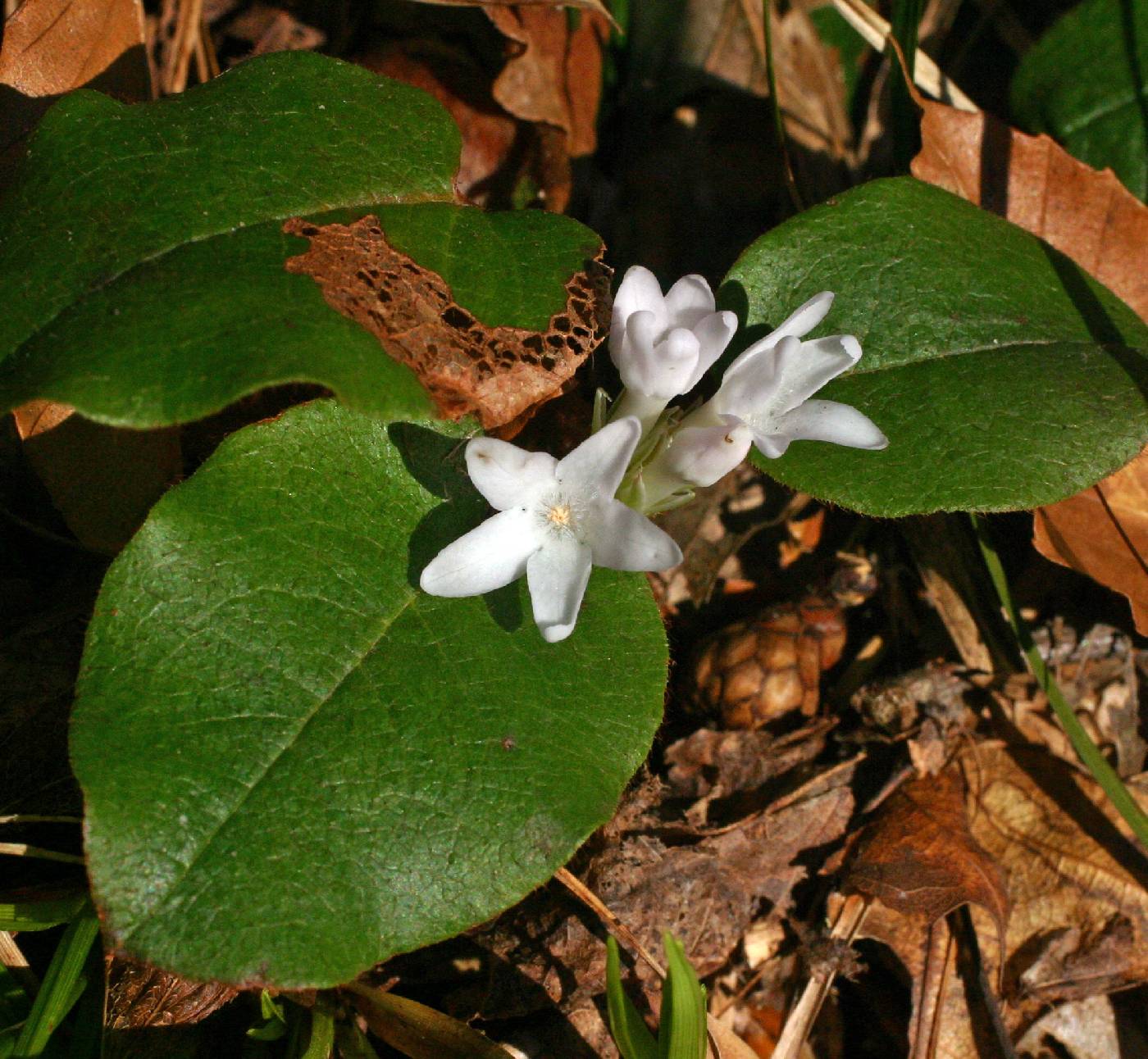Epigaea
|
Family: Ericaceae |
Subshrubs. Stems creeping or prostrate; twigs coarsely hirsute (especially new growth). Leaves persistent, alternate; petiole present; blade coriaceous, margins entire. Inflorescences axillary or terminal, spikes or dense racemes, 2-6(-10)-flowered; perulae absent. Flowers bisexual or unisexual (functionally dioecious), radially symmetric; sepals 5, distinct, (imbricate); petals 5, connate for ca. 1/2 their lengths, corolla ± deciduous, ± salverform; stamens 10, included; anthers without awns, dehiscent by longitudinal slits; ovary 5-locular; style included; stigma 5-lobed. Fruits capsular, depressed-globose, dehiscence septicidal. Seeds ca. 100, ovoid to globose, not winged, not tailed; testa foveolate. x = 12. Epigaea comprises E. repens in eastern North America, E. asiatica Maximowicz in eastern Asia, and E. gaultherioides (Boissier & Balansa) Takhtajan in southwestern Asia (Caucasus region). The species of Epigaea are infrequently cultivated; they are difficult to establish and maintain (M. A. Dirr 1998).
Plants functionally dioecious, the fls 5-merous, either pistillate, with vestigial stamens, or apparently perfect but with unexpanded stigmas and functionally staminate; each fl closely subtended by 2 ovate bracts nearly or quite as long as the cal; sep distinct to the base, strongly imbricate; cor salverform, the thick tube densely pubescent within, the lobes oblong-ovate; stamens included; filaments slender, hairy below; anthers linear, awnless, opening longitudinally; ovary villous above; style slender; stigma 5- lobed; capsule fleshy, depressed-globose, at length 5-valved, subtended by the persistent cal and bracts, white-pulpy within; prostrate, creeping, evergreen shrub, with leathery, alternate lvs and conspicuous, pink to white, fragrant fls in short, crowded, terminal and axillary spikes. 3, the others in Japan, Caucasus, and Asia Minor. Gleason, Henry A. & Cronquist, Arthur J. 1991. Manual of vascular plants of northeastern United States and adjacent Canada. lxxv + 910 pp. ©The New York Botanical Garden. All rights reserved. Used by permission. |

